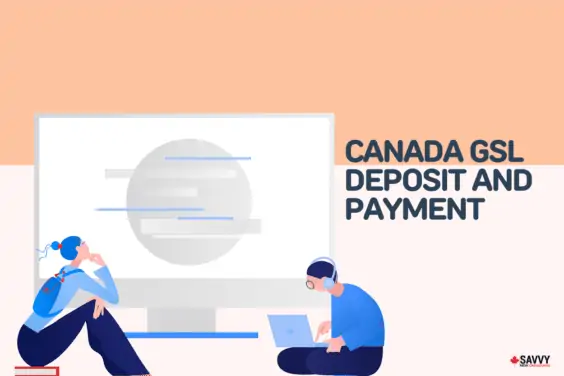In Ontario, people with disabilities who need financial assistance can rely on the Ontario Disability Support Program (ODSP) to provide them with ODSP benefits.
To help recipients further, Ontario will apply annual ODSP adjustments as inflation rises. The next increase for ODSP payments will be in mid-2024.
Read on to learn more about ODSP, the ODSP payment dates, the increase this year, and how to qualify for the program.
What is the Ontario Disability Support Program (ODSP)?
The Ontario Disability Support Program (ODSP) is a government program that provides employment support and assistance to people with disabilities.
ODSP is a social assistance program that helps individuals with a substantial physical or mental disability expected to last for a year or more.
If you are qualified for ODSP income support, you will receive a monthly benefit, the amount of which will depend on your living situation.
Administered by the Ministry of Children, Community, and Social Services, ODSP has two main parts: Income Support and Employment Support.
Income Support
Income support provides eligible people who have disabilities with financial assistance that covers the cost of food, clothing, and other necessary personal items.
The amount you are eligible for is based on the number of people in your family, whether or not your spouse has a disability, and the age of your family members.
Income support includes assistance for basic needs, shelter allowance, and board and lodging for certain living situations.
If you are eligible for income support, you may also qualify to receive other ODSP aid like assistive devices and health benefits.
Employment Support
Employment Support helps if you can work and want to find a job. The ODSP assists you by providing the following:
- Assistance in finding the right job for you
- Help in preparing for work
- Job coaching
- Help to advance in your career
- Devices that help you perform your job
- Assistive devices such as mobility devices or visual hearing aids
- Interpreter or intervenor services
- Clothing, tools or equipment that help you do your job
- Transportation assistance
- Other items that give you the ability to perform your work
If you choose to start your own business, ODSP will provide assistance, such as:
- Help in developing and implementing a business plan
- Training in money management, record keeping, budgeting and marketing your business
- Assistance in obtaining work-related disability supports such as assistive devices and adaptive technical equipment.
Increase to ODSP Payments
In September 2022, ODSP benefits were increased by 5%, which applies to basic needs, shelter maximums, board and lodge for single individuals and families, and long-term care home or specialized care residence services.
Below is a summary of current maximum ODSP payments:
| Benefit Unit | Basic Needs | Maximum Shelter | Total ODSP |
|---|---|---|---|
| Single | $706 | $522 | $1,228 |
| Single parent + 1 child | $849 | $821 | $1,738 |
| Single parent + 2 children | $849 | $889 | $1,738 |
| Couple | $1,018 | $821 | $1,839 |
| Couple – 1 child | $1,018 | $889 | $1,907 |
| Couple – 2 children | $1,018 | $964 | $1,982 |
The ODSP Basic Needs allowance includes the cost of food, clothes and other necessary items. Shelter benefits include mortgage payments, rent, homeowner’s insurance, condo fees, and utility bills.
Beginning in 2023, the amount of the ODSP income support is adjusted based on inflation in July each year.
When Will ODSP Increase?
ODSP will increase in July 2024. Ontario will apply annual adjustments to the ODSP tied to inflation.
ODSP Payment Dates
ODSP issues income support payments monthly. Payment dates are typically on the last business day of each month.
| Benefit Month | ODSP Payment Date |
| December 2023 | December 20, 2023 |
| January 2024 | January 31, 2024 |
| February 2024 | February 29, 2024 |
| March 2024 | March 28, 2024 |
| April 2024 | April 30, 2024 |
| May 2024 | May 31, 2024 |
| June 2024 | June 28, 2024 |
| July 2024 | July 31, 2024 |
| August 2024 | August 30, 2024 |
| September 2024 | September 27, 2024 |
| October 2024 | October 31, 2024 |
| November 2024 | November 29, 2024 |
| December 2024 | To be determined |
Qualified recipients will receive their payments in one of three ways:
- Direct Bank Deposit. In this method, ODSP deposits the money directly into your bank account, so the money is available to you on the payment date. You will typically receive a text message or email to notify you of the deposit.
- Reloadable Payment Card. The card functions like a debit card. If you do not have a bank account, ODSP will load the funds onto the reloadable payment card on the payment date. You can withdraw the funds at any ATM.
- Cheque. This option is for ODSP benefit recipients who live far from the bank or have no access to ATMs, debit cards, or an online account. With this method, it will take days before you can receive your ODSP payments. ODSP uses it only in special cases.
ODSP Eligibility
To be eligible for ODSP benefits, you must meet the definition and requirements stated by the Ontario Disability Support Program Act.
The ODSP Act states that a person with a disability refers to an individual with:
- A substantial mental or physical impairment that is ongoing, periodic and expected to persist for a year or more
- An impairment that causes direct and cumulative effects on your ability to work, take care of yourself or participate in community activities
- A disability with duration and restrictions that an authorized healthcare professional has evaluated and verified
List of Disabilities That Qualify for ODSP
ODSP has clearly defined the qualifications and requirements for the program, but the agency has not provided an all-encompassing list of disabilities that qualify for ODSP.
Below is a list of disabilities that may qualify for ODSP as listed by a group of Ontario injury lawyers:
- Cardiovascular conditions, such as heart failure, recurrent arrhythmias and deep vein thrombosis (pulmonary embolism)
- Respiratory conditions, including asthma, chronic lung infections and lung cancer
- Digestive system disorders, such as irritable bowel syndrome, hernia and kidney failure
- Musculoskeletal conditions, including arthritis, back pain and carpal tunnel syndrome
- Nervous system disorders like epilepsy, cerebral palsy and stroke
- Psychological disorders, such as drug addiction, depression and chronic anxiety
ODSP will base eligibility on the degree and severity of the disability. If your condition hinders you from performing your job, it may qualify you to receive ODSP benefits.
Speak with your healthcare provider to find out if your health condition can qualify you for ODSP and to understand the eligibility process.
ODSP Extra Benefits
Eligible recipients of ODSP payments get ODSP extra benefits and other health and disability-related benefits, including:
- Prescription drug coverage
- Basic dental services
- Vision coverage and glasses
- Mandatory special necessities benefit (includes transportation for medical appointments and treatment, diabetic supplies, surgical supplies and incontinence supplies)
- Pregnancy and breastfeeding nutritional allowance
- Coverage for assistive devices
- Hearing aids and devices
- Batteries and repairs for mobility devices
- Special diet allowance
- Guide dog benefit
With these hidden benefits from ODSP, you can get help with different expenses, ranging from health to dental, vision, assistive devices and other costs related to your condition.
How to Apply for ODSP
For the ODSP application process, you must meet the following:
- Be at least 18 years old.
- Be an Ontario resident.
- Meet the definition of a person with a disability according to the Ontario Disability Support Program Act or be a member of a prescribed class.
- Have assets that do not exceed the limits established by the program.
- Be in financial need.
A prescribed class refers to a specific category of people who do not need to go through the process of disability adjudication to become eligible for ODSP income support.
You will also need to prepare some documents before applying for ODSP, which include:
- Social Insurance Number (SIN)
- Health Card Number
- Birth certificates (yours and your dependents’)
- Bank account information
- Documents that reflect your financial situation
- Cards provided by the Ontario Health Insurance Plan (OHIP)
- Housing costs
- Assets
To apply for income support, complete the two stages of the application process:
1. Financial Eligibility Evaluation
You can apply for the benefit by visiting the ODSP office in your area, filling out the online form, or via phone.
The caseworker assigned to you will interview you, review your financial eligibility, and notify you within 15 business days if you are qualified or not.
2. Disability Assessment
When you apply for ODSP, your caseworker will provide you with a Disability Determination Package that you and your healthcare professional must complete in 90 days and return to the ministry’s Disability Adjudication Unit.
During the Disability Determination Process, ODSP will review your completed package to find out if you qualify for the program. ODSP will assess your situation, including your income, living expenses, shelter costs, family size, and assets.
If your ODSP application passes the evaluation process, you will qualify to receive income support.
FAQs
Depending on your living situation, you can get up to $1,228 in ODSP income support each month. Starting July 2023, ODSP will index payments to inflation and adjust the amount yearly.
The basic needs part of the ODSP benefit includes an allowance for clothing and other necessary items. The amount you receive for basic needs depends on the number of people in your family, their ages, and whether or not your spouse has a disability.
As a person with a disability and an ODSP recipient, you can make up to $1,000 a month through employment without reducing your ODSP income support. If you earn more than that, ODSP will deduct an amount equivalent to 75% of your net monthly income above the first $1,000. Use ODSP My Benefits to report your income.
When you turn 65, you may no longer receive ODSP payments since you will automatically qualify for and switch to the Old Age Security (OAS) pension. Depending on your income, you may also be eligible for the Guaranteed Income Supplements (GIS) and the Guaranteed Annual Income System (GAINS), both monthly payments for low-income OAS pensioners.
Related:



